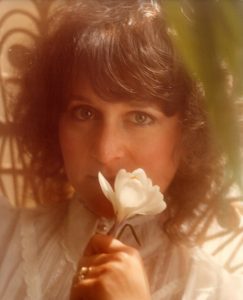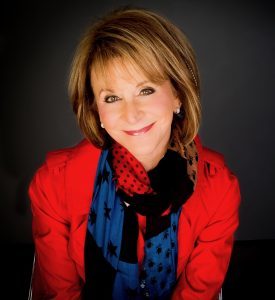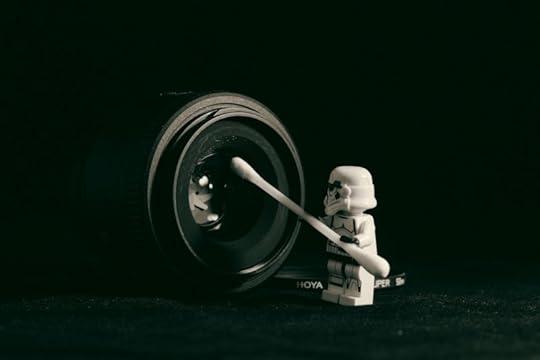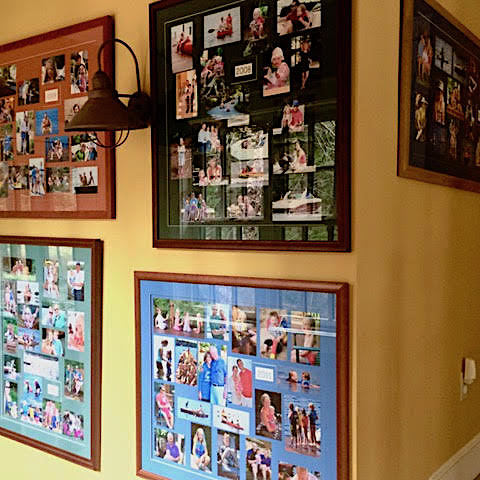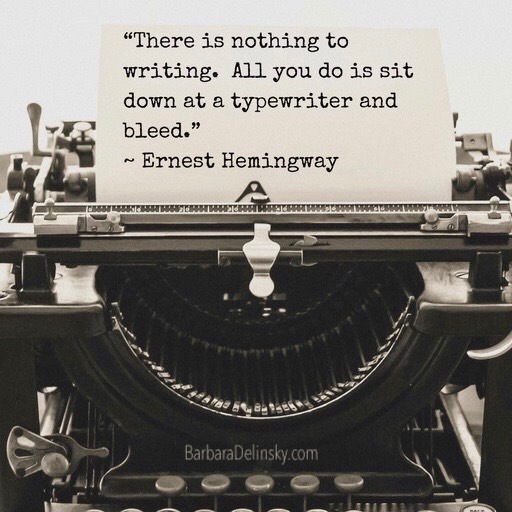Barbara Delinsky's Blog, page 2
September 14, 2018
How to Write Like Delinsky: My Five Rules Of Writing
Some things are ingrained from childhood. One of those, for me, is the start of the school year. New clothes, new books, new classes, new rules – I may have outgrown the first three, but the part about rules never leaves. So I start off the 2018-2019 learning year with FIVE Rules of Writing.
If you think they’re just for you, think again. I’m heavily into writing my next book, so they’re absolutely for me, too.
DO YOUR HOMEWORK
The old rule of thumb is to write what you know, which is fine and dandy until you’ve written a dozen books and “what you know” is feeling used up. At that point, you turn to something new and quickly realize that writing “what you know” is a cinch by comparison. I have faced this situation dozens of times, and while I do fall back on the familiar every few books, like photography, there has to be more.
The key? Research. No, no. Don’t moan and groan. We’re long past the days when research had to be done in the library or, worse, by snail mail. Now it’s about googling, reading blogs, and emailing resources. I’ve learned about raising Angora rabbits, designing a home, sculpting a teapot. I’ve learned about health issues, like MS, infertility, brain injury, and Alzheimer’s. For my current book, I’m researching beach erosion and the life of a veterinarian.
Yes, that’s researching, present tense. It’s important to research major elements before you start to write since the results of what you learn can impact your plot. But as new things crop up in the course of the writing, as they have in my WIP, I do more research. Just remember. Make a mistake, and some reader out there will catch you, no matter how many disclaimers are in your Acknowledgement page.
CREATE LIKEABLE CHARACTERS
The reader has to want to read on, and for that, she has to care. Creating characters who are likeable can make that happen. When I think back on books I’ve read in the last year and hated – even audiobooks I’ve started and then actually returned – it’s because I found the main characters so unpleasant that I couldn’t have cared less. To the contrary, put a sympathetic character in an untenable position, and the reader is hooked.
Please don’t misunderstand me. Main characters shouldn’t be perfect. We identify with them far more if they’re flawed, since we’re flawed, too. But there’s sweet, quirky, or shy, and absent-minded, severely near-sighted, or logic-challenged, any of which can be endearing. There’s nothing more addictive than being introduced to a character we like and then having the author pit that character against an enemy.
There’s a fine line between a sympathetic and annoying. Occasionally, I’ve crossed it without meaning to. This happened with Sweet Salt Air, which was wildly successful in its final form but might not have been if the first draft had gone into print. Of the two friends around whom the story is told, Charlotte is one who made a moral faux pas years before, but Nicole was the one my editors disliked. She was too self-absorbed, too small-minded, they said. And they were right.
So I went back and altered her character at the get-go. That allowed me to give her moments of self-absorption and smallness, but the readers liked her. I needed to have the reader care enough about Nicole, warts and all, to keep reading.
GIVE EACH SCENE A PURPOSE
I recently read a book where the only purpose of several lengthy passages was to showcase the authors’ exquisite prose. And that’s fine if that’s what your readers want. Mine do not. I’ve written scenes that I thought were brilliant in a literary sense, only to realize that they lacked purpose and were instead a distraction that broke the momentum and diluted the plot.
How to avoid this? Part of it can be done at the planning stage. As I plot the general course of the book, I list scenes that will move the plot forward. The greater part, though, has to be done as I write. At the end of a work day, as I reread, I try to be critical. If what I’ve written doesn’t add something to the book, it has to go.
Cutting is painful. Deleting what you’ve sweated to create is every writer’s nightmare. But it matters. Take Family Tree. Only after I’d finished writing the whole thing did I realize that several chapters were superfluous. My editor agreed. I deleted whole chapters. The entire manuscript actually went from 450 pages to 350. And the book is stronger for it.
So please. Don’t waste the reader’s time. Make each chapter count. A reader who skims is a reader who will not buy your next book.
MAKE IT MOVE
This is about speed, rather than content, as in the point above. It’s about pacing. Your plot has to go somewhere, and it has to go there in a timely fashion. Today’s reader is used to non-stop, heart-thumping speed. A suspense novel offers that, which perhaps accounts for the rise of the Gone Girl genre.
But my books aren’t suspense novels. They are emotional family dramas, and family dramas can unfold in ways that are slow and cerebral and dense. That said, if I want to attract a larger audience, even some of those women who also like thrillers, my plot has to move.
Two things can help. First, a vehicle to carry the plot along. Take Before And Again. The plot centers on a woman who has lost a child and is trying to move on with her life, only to have the past keep popping up when she least expects it. This book has a main character, her mother, her brother, and her ex-husband, plus lots of anguished discussions with each.
But I needed a vehicle. So I gave my protagonist a friend with a legal issue that involved media attention. Legal issues allow for reveals at pivotal moments. Hence, my vehicle.
Second, a cliff-hanger … or twenty. I’m actually going to devote an entire blog to this, so if you’re interested, check back in another week or two. But the issue here, really, is where to end a chapter. I love it when readers comment that they couldn’t put my book down. Part of that is because I end a chapter in a way that raises a new question that can only be answered by moving right on to the next chapter.
EDIT FOREVER
Well, maybe not forever, but certainly either until you know that what you have is the best you can possibly do, or until you run out of time. I started writing when an electric typewriter was state of the art. Now, with computers making adjustments and improvements easy, there is no excuse not to do it.
And it’s constant. There is no first draft or second draft. If a draft counts each time I make a significant change, I do hundreds of drafts for each book.
What do I edit?
Words, sentences, paragraphs. I may not be a wizard of literary prose, but I like what I write to have rhythm. When I first started writing, I attended a signing for a favorite author. When I finally reached the head of the line and gave the author my book to sign, I told her that I loved her work because it flowed. I’m not sure she understood what I meant. I suspect she was just thinking about how much longer she had to stay.
But the flow of that author’s words was a model to me that I follow to this day. When I edit, I go for flow.
I edit to streamline. Why use three adjectives when one is far more effective? Of course, that one has to say it right, so I edit it until I like the one I have.
I edit to correct typos. And even then readers catch a few.
I edit to eliminate repetition. Maybe it’s just a pet peeve of mine, but I hate reading a book in which events are repeated each time a character talks with a different person. The author (me!) may not realize it’s happened until she rereads the whole book.
I edit for inconsistencies in the spelling of names, eye color, chronology. Granted, I have a copy editor whose job is catching these, but for me, it’s a matter of pride to turn in the best-looking manuscript.
I edit for slow parts, as per #s 3 and 4 above. One thing I’ve learned over the years is that if I’m bored, my reader will be, too. The only yawns I want are from readers who are absolutely exhausted because it’s the wee hours of the morning, and they can’t put my book down.
There you go, my FIVE Rules of Writing.
Do you follow any of them when you write an email or a text? If you’re a writer, do you have any to add?
Connect with me on social media: Twitter, Facebook, my new Street Team (click to join for fun, exclusive things I’m dreaming up), Pinterest, Instagram, and that’s it for now. I need time to write my books!
Before and Again is now available everywhere. Click here to purchase! 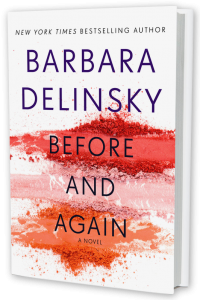
The post How to Write Like Delinsky: My Five Rules Of Writing appeared first on Barbara Delinsky.
August 5, 2018
This is The Behind-The-Scenes Story of ‘Flirting With Pete’
If you’re thinking you’ve read every story I’ve written, you’re wrong. Well, partly wrong.
A while back, I wrote a novella, roughly 175 pages, that was deeper, darker, and more daring than anything I’d ever written. At the time, I had a slew of romances under my belt, and had already moved into mainstream fiction with titles like For My Daughters, which deals with a dying mother’s last wish; Shades of Grace, which focuses on Alzheimer’s disease; and Three Wishes, in which the protagonist has a near-death experience that entirely changes her life.

The new cover. What do you think?
So I had already been toying with serious topics.
Then came Flirting With Pete, in which a young woman is stuck in a life so terrifying that she dreams up the perfect escape. Jenny Clyde is definitely the stuff for which therapist’s couches are made, and while we hear stories like hers today, not so twenty-five years ago. I believed I had written something totally real, totally vivid, totally heart-rending. I felt that Flirting With Pete had taken me to the next level as a writer.
My editor did not agree.
He felt that this story, while indeed real, vivid, and heart-rending, was not what my readers would want. “Put it away,” he advised, albeit gently. “The time will come when it’s right.”
So that’s what I did, just put it away. But I didn’t forget. For seven years, I continued to believe that Flirting With Pete was my very strongest piece. The challenge, I realized, was to take this novella and build a whole other story around it, while keeping the basics intact.
That’s what I did. I created another main character, Casey Ellis, who finds Jenny Clyde’s story in journal form in the desk of her father, a renowned psychologist, whom she has never actually met but who, on his sudden death, leaves her his Boston townhouse, with its desk, its Maine Coon cat, and it’s gorgeous hidden garden. Casey, too, is a psychologist, drawn to that field in part by her dream of being seen by this man, who sired her during a one-night stand. While her life situation is far safer than Jenny Clyde’s, her need for love and family is every bit as dire.
It took me a while to get it right – to weave the novella into the larger novel – and I had to change a few elements at the novella’s end to give my readers what I knew they would want. And you know, it worked! I just reread this book and was drawn to tears at the end.
The full novel, Flirting With Pete, was published in 2003. Its gorgeous jacket and I promoted it on The Today Show, resulting in solid New York Times Bestseller-dom status.
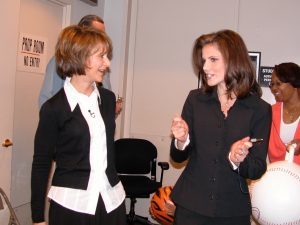
Appearing on The Today Show to promote Flirting With Pete? My dream! It was June 2003, and the book had just come out. I was a bundle of nerves until I met Natalie Morales in the Green Room. She had me totally relaxed by the time we took our seats on the Plaza to talk.
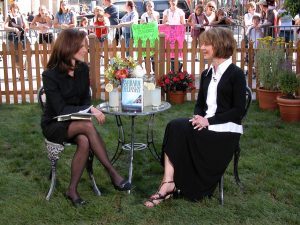
Natalie was a skilled interviewer even back then, which is, of course, why her career has skyrocketed since. She gave the perfect intro to Flirting With Pete. See the book jacket? It was stunning, a cutaway to the cover beneath, which had the gorgeous flowers discussed in the book. The new trade paperback jacket is totally different — but a beauty as well.
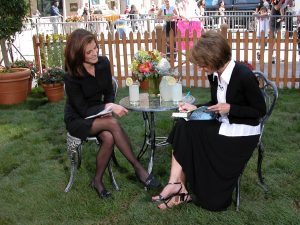
I’ve signed so many books, but this one was a special treat. Okay, okay. I know Natalie Morales doesn’t keep all the signed books she receives. But a girl can pretend, right?
Now, this month, it is being published for the very first time in trade paperback, which I love.
The price is lower than the hardcover, but the print is every bit as readable – and the story? Well, you tell me. Do you see the story within the story? Does it work for you?
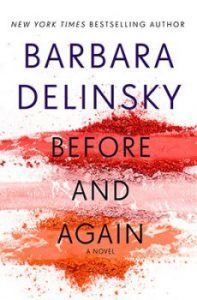
Before and Again now available
Connect with me on social media: Twitter, Facebook, my new Street Team (click to join for fun, exclusive things I’m dreaming up), Pinterest, Instagram, and that’s it for now. I need time to write my books!
Before and Again is now available everywhere. Click here to purchase!
The post This is The Behind-The-Scenes Story of ‘Flirting With Pete’ appeared first on Barbara Delinsky.
June 22, 2018
I love Pub Day—I Hate Pub Day Photos
Pub day is like a birthday. It comes every year at the same time, so readers know to expect it. You make lists of what you want and lists of what you hope. You wait for it … wait for it … wait for it. Then, finally, it’s here. You’re a year older. But you have a new book, new cover, new sales goal. You may also have a new author photo – which, honestly, for me, is the most painful part of the whole process.
I hate having my picture taken. Hate it. That’s why I became a photographer myself – to be on the back end of the camera, rather than in front of the lens. But my book needs a picture of me, and not a cute little stylized emoji. We’re talking about hair and makeup and clothes. We’re talking weeks of planning – losing a few desperate pounds, timing haircut and hair color and manicure. We’re talking poring through my closet for the right outfit, buying a new one and then returning it, because it’s nowhere near as good as what I already have. We’re talking multiple outfits, because while you’re going to all this effort, you need to take photos for more than one book, for Pete’s sake.
Over the years, I’ve done photo shoots in a studio, in a park, in a back room at the publishing house, at a store, at my home. On this pub day (Before And Again – YAY!!!), I thought it would be fun to give you a retrospective.
The Photo Retrospective
First, my first. It was 1980-something. I found a local photographer who loved the idea that there was love in my books. He plied me with wine, picked a rose from his arbor, and took this.
By the 1990’s, I was taking myself a little more seriously. This is from 1991, taken in yet another local studio. Look at that hair!
By 1993 and 1994, I wanted glitz. Here are two from those years.
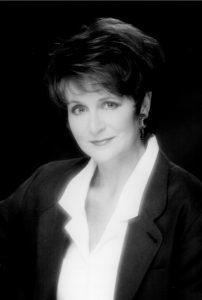

Then came Coast Road in 1998. My publisher brought me to New York and took me to the studio of a renowned photographer, who tried to recreate the feel of the Big Sur coast. What I actually remember most about this shoot is that neither the photographer nor the art director liked the clothes I had schlepped from Boston to Manhattan. So the art director’s assistant actually went out to a nearby store and bought a few things, none of which I used. Not one of my most successful outcomes here. But at least the clothes are mine.
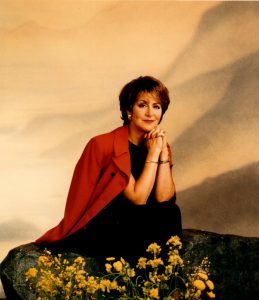
With the turn of the century, the photos improved. This one for The Woman Next Door was taken in 2000 on the front steps of my own house. I always do better when the shoot is local. It’s so easy to pick clothes when the photographer and art director are with me in my closet.

Two years later, in 2002, a photo shoot in my office produced shots for Flirting With Pete and An Accidental Woman.
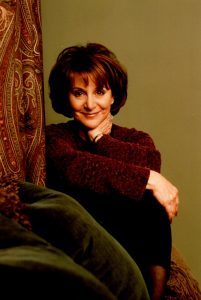
Then came one of my favorite photographers, Jerry Bauer. I’m not sure how I first got his name, likely from an editor whose author he photographed. Jerry was an easy-going, itinerant photographer. An American living in Rome, he used to come to the US to photograph for three weeks at a time. Definitely of the old school, he believed in using available light and his own eye. When I picked him up at the train station, he would be carrying one camera case. That’s it. Just one. We’d drive to my house where we’d have lunch and talk politics, then we would wander through the house together until I heard, “Ooooh … right here … the light … beautiful … tip your head … this way … back a little … chin around … perfect.” I used him for two different shoots. The one on the left is from 2004, the one on the right from 2006. He died in 2010. I miss him.
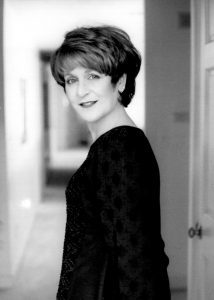
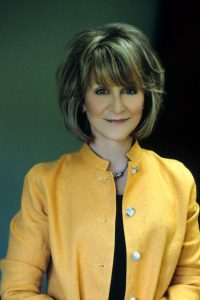
In 2008, there was an outside shoot at Tower Hill Botanic Garden in Boylston, MA. The weather was a factor; the original date had to be scrapped because of rain, and then the day we chose was gorgeous but HUMID. If you have curly hair like mine, you know that HUMID is BAD. But I had no choice. Airbrushing took care of the worst of the curing ends. And I actually did get a shot that I loved. I used it on book covers, my website, and for publicity gigs.

Then I found Kerry Brett. She’s a dream of a photographer whose studio is an hour from my home, and she’s so, so talented. Our first shoot was in 2012. One of my most vivid memories of this is arriving at her studio and starting to change into the first of my outfits in her foyer when her dad walked in. He’s a renowned photographer in his own right, and I already knew him.
So there I was with a pair of leggings half on; I can’t pull them up under my tunic with him standing right there, and what’s the point of taking them off with him watching. So I froze and talked with him, bent over with my hands on my tights … until he left. The shoot was all uphill from there. We started indoors, then went outside.
I include two pictures from this shoot so that you can see the difference sunlight can make when it comes to hair. Same shoot, different lighting. Okay, add a little wind on the right, but you get the idea.


My second shoot with Kerry was in 2015 and includes my current author photo. Here’s another good picture from the shoot, but if you want to see the book cover one, you’ll have to buy the book!
Connect with me on social media: Twitter, Facebook, my new Street Team (click to join for fun, exclusive things I’m dreaming up), Pinterest, Instagram, and that’s it for now. I need time to write my books!
The post I love Pub Day—I Hate Pub Day Photos appeared first on Barbara Delinsky.
May 30, 2018
Top 5 Reasons to Love Breakfast
Breakfast is my favorite meal, which is why one of my favorite scenes in the upcoming BEFORE AND AGAIN is Maggie Reid and her mother having room-service breakfast in their suite at the Devon Inn and Resort. Maple bacon, scrambled eggs, thick wheat toast, fresh berries with clotted cream? I drool as I write this, and Maggie and her mom didn’t even have sticky buns!
I’m a morning person. I do my best work between 5 AM and 8 AM, maybe because my mind is clear and fresh, maybe because no one else is awake so there a few interruptions. I also suspect it has something to do with the lure of breakfast to come when I’m done. Oh, I do have tea and often a piece of fruit while I’m working. But a full breakfast? Not ‘til after. And actually, I don’t necessarily pile a plate with all of the following things, but any one of them has the power to make my day.
What’s to love about breakfast?
Fresh-squeezed orange juice.
I love the color, the sweetness, the pulp. Oh, I know. The rule of thumb is to eat your calories rather than drink them, but I take that to mean alcoholic drinks with dinner, not pulpy OJ.
Local, organic sunny-side-up eggs.

There’s a reason why we talk about moods being sunny. Sunny is happy. I find two eggs staring up at me from a plate to be uplifting.
Bacon.

Bad, bad, bad for you. I know. But great, great, great with eggs.
Warm pecan sticky buns.

OMG. My passion. No, I do not buy these on a regular basis, because I would eat them on a regular basis, which would not be good. But once in a while? Especially if we’re away from home and the buns are part of a buffet, nestled together in a large cast-iron skillet that’s come straight from the oven? Yummmm.
Hot, fresh-brewed coffee.
What can I say? One bite of sticky bun, one sip of coffee. Another bite of sticky bun, another sip of coffee. There’s something about combinations of tastes, and these work for me.
So do fresh berries – blueberries and raspberries. And grits. And morning glory muffins. And a bagel, cream cheese, and lox. And avocado toast. Even egg white frittata.
Oh oh oh, and pancakes? What about Great-Granny’s Panacea Pancakes, an heirloom specialty that Jamie MacAfee absolutely needs needs needs to introduce to her sudden son in BLUEPRINTS?
So many goodies to start the day. What works for you?
Connect with me on social media: Twitter, Facebook, my new Street Team (click to join for fun, exclusive things I’m dreaming up), Pinterest, Instagram, and that’s it for now. I need time to write my books!
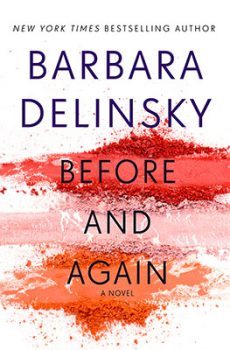
Pre-order Before And Again now! Click here for Kindle, hardcover, and audio.
The post Top 5 Reasons to Love Breakfast appeared first on Barbara Delinsky.
April 19, 2018
Four Reasons Why I Listen to Classical Music
 I never used to. Well, I did occasionally, but it wasn’t my go-to station when I was in the car. I mean, I’ve always appreciated classical music. I just never before needed it as much as I do now.
I never used to. Well, I did occasionally, but it wasn’t my go-to station when I was in the car. I mean, I’ve always appreciated classical music. I just never before needed it as much as I do now.
What changed? Donald Trump came to power. That single happening has been so loud, so ugly, so divisive, that I need a break from the continual national noise. Sure, I could listen to pop music, which is loud and often has a mind-numbing beat. But there’s nothing soothing about it.
Classical music? Ahhhh. Classical music. It does soothe me. Why? Four reasons.
First, it has history. At a time when political rhetoric seems ready to blow up and destroy us all, the longevity of classical music is something. There’s comfort in the fact that this music has lived through wars and survived. Handel’s “Water Music” debuted in 1717; that’s more than 300 years and Lord knows how many wars ago!
Second, it is brilliant. More to the point, its composers are brilliant. Bach, Tchaikovsky, Vivaldi? Mozart? Chopin, Brahms, Debussy? Schubert and Liszt? OMG, I could go on and on – and then there’s Beethoven, who was deaf when he composed some of his most famous works.
Third, I appreciate the chords, the tempo, the harmony – and the orchestra. Why? I used to play in an orchestra – well, “play,” in my totally amateur way. Okay, I took piano lessons for nine years growing up. But did you know I also played the flute? I used to march with my school band in our town’s annual Memorial Day Parade. I sometimes played piccolo, because John Phillip Sousa’s “Stars and Stripes Forever” absolutely needs a piccolo. But for the school orchestra, it was flute all the way.
Another little secret: When my kids were toddlers and I sought an escape, I rented a violin. I was into my third lesson when I faced a choice – violin or fingernails. Fingernails won. But I do love the resonance of a violin well played, a deeper and soulful viola, a mellow cello, and I can hear these instruments when I listen to classical music. I can also hear main themes and variations on main themes, as I was taught in the music appreciation courses I took in college.
Fourth and finally, I can think while I listen to classical music. I review what I’ve written, and plot what I’m writing next. The lack of noise is conducive to thought. I’ve actually worked bits of classical music into my WIP, in which my protagonist’s 13-year-old daughter loves Ed Sheeran and Maroon 5 but also does appreciate these older works.
Classical music won’t solve our country’s problems, but at least it may cool some tempers. Well, only some.
Connect with me on social media: Twitter, Facebook, my new Street Team (click to join for fun, exclusive things I’m dreaming up), Pinterest, Instagram, and that’s it for now. I need time to write my books!

Pre-order Before And Again on Amazon now! Kindle, hardcover, and audio.
The post Four Reasons Why I Listen to Classical Music appeared first on Barbara Delinsky.
March 14, 2018
These Are MY Reasons For Spring Cleaning
Are you into this? Such a cliché, the expression “spring cleaning,” and I never consciously set out to do it. But here I am, again this March as I do every March, sorting through unnecessary paper on my desk, disposing of expired food in my pantry, weeding winter-weary clothes from my closet. I tell myself that as the days get longer, it’s just an issue of my having an excess of energy – and if that reasoning doesn’t work, I tell myself that after spending so much inside time during the winter, my mind is the problem. It’s cluttered. I need to air it out, which means streamlining what I see.
BTW, that’s what I do regularly with my desk. I have trouble creating new words, sentences, plot twists, when the top of my desk is a mess. The last thing I do when I leave the office at the end of the day is to streamline this one working space. But we’re talking neatening piles, not true cleaning.
Honestly? In the case of spring cleaning, for me, it’s mainly a case of old habits dying hard.
Oy, The Cleaning
March brings Passover thoughts, and Passover in my childhood home always, always, always involved cleaning. Yes, closets were pared down and rooms aired out after months of closed windows. Torn sheets were either mended or discarded; outgrown dresses were handed-down. Above it all, though, the kitchen was Ground Zero. Since we kept a Kosher home, we had two sets of dishes year round, one set for milk and one for meat. Come Passover, those dishes had to be removed, every cabinet wiped down, and two sets of Passover dishes (and utensils) – one for milk and one for meat – put on the shelves in their stead. It was an exhausting job, and that, even before Passover food prep began.
In fairness, back then the women in my family didn’t work outside the home. I do, so to speak. And I don’t keep Kosher. As soon as I was married and had a home of my own, though, I took over the job of making Passover Seders, and I did it not for one, but for the requisite two nights my father wanted. He’s gone now. We only do one Seder, and if it isn’t the first night, it’ll be the second or fourth or sixth. Finally, too, I’ve passed the torch to my sons and their wives. Still, I clean in spring.
Cleaning Rituals
Other religions have spring cleaning rituals – like the custom of Catholics to thoroughly clean the church altar on Maundy Thursday, the day before Good Friday. Or the traditional house cleaning done by followers of Greek Orthodoxy on or around the first week of Lent. But for many, it’s just a practical thing, a clearing out of winter’s clutter and making way for new, green growth.
My spring cleaning this year has special significance. We just sold our lake house! If you follow me on Instagram, you’ve seen dozens of photos from there over the last twenty years, many of them sunsets, one different from the next. Now it’s time for different views – and for a new, wonderful family with two sons who are at the same age our sons were when we built the place.
Cleaning and More Cleaning
So. Sold! Talk about cleaning! Closets, medicine chests, upper cabinets with twenty years of soy candles, lower cabinets with assorted basketry, a garage with water toys of all shapes and sizes – we had our work cut out for us. The buyers have bought the place furnished, but anything that was torn or worn or unusable had to go. Everything personal, like family photos, came off the walls. That meant twenty large, framed photo collages, one for each year we were there.
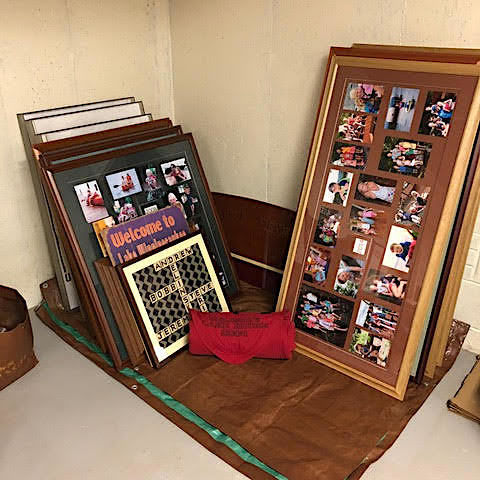
AFTER
And then, and then there were books. We had a full library there, so we culled the shelves and donated bags and bags of them to the Moultonborough library. Other books came back here to Massachusetts. But to make room for these, I had to cull the shelves here, which meant donating bags of books to this library. I made room for those books from New Hampshire that we just had to keep, and for a slew of new BD books coming in May (the mass market of Blueprints) and June (the brand new hardcover, Before And Again), not to mention the new books I’m always buying to feed my own reading habit.
I’m good now. Exhausted, but good. Clear of mess, clear of mind. Spring cleaning done an easy week before the Spring Equinox.
And you? Can you identify with any of this? Do you have a cleaning project waiting to happen? I still do. It’s a corner of the attic here in our Massachusetts home that is positively littered with the baseball cards our sons collected way, way, way back when.
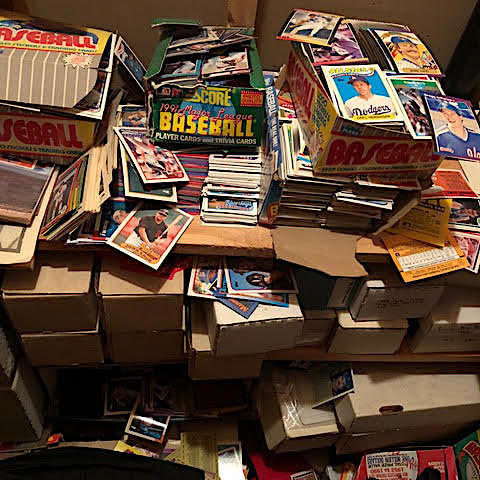
BASEBALL CARDS TO ORGANIZE
This is my next challenge, but like I say, it’s the attic, which is not heated. So that project waits until spring warms the place.
Connect with me on social media: Twitter, Facebook, my new Street Team (click to join for fun, exclusive things I’m dreaming up), Pinterest, Instagram, and that’s it for now. I need time to write my books!

Pre-order Before And Again on Amazon now! Kindle, hardcover, and audio.
The post These Are MY Reasons For Spring Cleaning appeared first on Barbara Delinsky.
February 25, 2018
The Truth About Why I Don’t Own a Gun
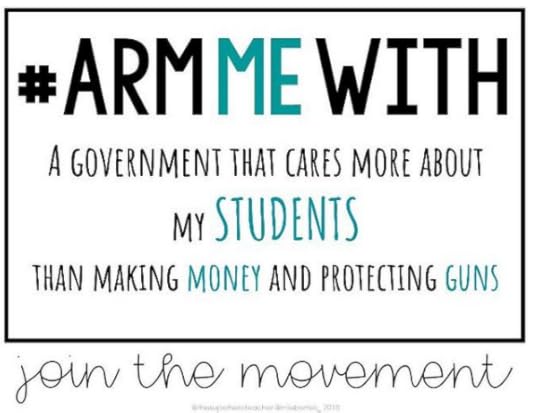 Why I don’t Own a Gun.
Why I don’t Own a Gun.It goes back to my childhood when I never had a toy gun. For one thing, I was a girl, and guns were considered improper toys for girls. For another, my parents never owned guns – largely because their parents had grown up in the shadow of Hitler, a time when soldiers came to the door with loaded guns and took innocent people away. My husband’s grandparents knew the same terror.
So we raised three sons without guns. Granted, they made guns out of Legos, and G.I. Joe came with miniature plastic ones. Still, they learned that a gun was a tool of war and had no place in a home.
Here’s where cultural influence creeps in. Our sons also grew up in a region where guns had a practical purpose. Hunters had rifles. People wanting security against home intruders, or women wanting protection if they had to be alone in a dark parking garage had handguns.
That said, I never considered buying a gun. Guns are weapons. So are knives, and I have enough of them here to cut steak or chop vegetables or use, if necessary, on an intruder to my home. Okay. So I’d have to physically “get” to said knives in order to protect myself. But wouldn’t I have to “get” to a gun as well? Would I really go through life with a gun tucked in my boot?
Mass Shootings With Guns
And now we have mass shootings in which innocent people are shot dead by assault weapons that have no other purpose than to kill. Columbine in 1998, Sandy Hook in 2012, and now Parkland, to name only three such horrific events? Yes, we need more money to treat mental illness. Yes, warnings of this last tragedy were ignored. But the fact that a mentally-ill 19-year-old was able to easily and legally purchase ten guns chills me to the bone.
Is this what Americans had in mind when they ratified the 2nd Amendment in 1791?
I would never suggest that we abolish the 2nd Amendment. No one is suggesting that, least of all the many Democrats who own guns. The only ones rabble-rousing on that score are right-wing pundits and the NRA.
As the grandchild of immigrants who fled to America in search of life, liberty, and the pursuit of happiness, I grew up thinking America was that place. But when the most basic right granted us in the Declaration of Independence – the right to life – is superseded by an unregulated right to own killing machines, something is seriously wrong.
My Hope for our Future
My hope? Do you know how many 17-year-olds in the US turn 18 every year? Nearly 4 million. If even half of those register to vote each year, in time we’ll have a powerful bloc of voters who grew up knowing gun violence and want it stopped.
Until then, I mourn what America could and should be.
The post The Truth About Why I Don’t Own a Gun appeared first on Barbara Delinsky.
February 14, 2018
This is Why I’m Sweating the Start of a New Book
Who said writing a book is easy?
I’ll tell you who. The man who sold me my first computer. I had been writing genre fiction at the time, and when I explained to him what that was, he said, “Ah-ha, this computer will make it easy. A few clicks and you can change names, eye color, and places – and, presto, you have a new book.”
How wrong he was – or ignorant or snarky or simply male. He clearly had not ever read anything that either I or any other dedicated genre writer had written, but that’s a whole other discussion. For now, suffice it to say, IMHO, that the advent of the computer actually makes book writing harder. It opens up possibilities that the conscientious writer simply can’t ignore.
Take editing. Working on a computer, I do it forever and ever and ever. Since the computer makes it so easy, there’s no excuse for sloppy work, so I edit some more. I may decide that the pacing is off; whereas pre-computer, I’d have let it go, now it’s so easy to shift chapters around that I do it, then edit again to make the transition smooth. If a character doesn’t feel exactly right, I go through the entire manuscript modifying his/her personality. I’ve changed locations mid-book, changed plot twists mid-book, even deleted superfluous characters mid-book. Granted, the end result is better than it would have been without computer capability. Still, I put way more time into my books when I work on a computer than I ever did in those pre-historic typewriter days.
Writing a book is demanding.
There are times when I’m between books and forget exactly how much so. But I’m starting a new book now, thirty pages in, and I’m feeling the pain. Consider this. The opening pages introduce the characters, the physical setting, and the plot. In that they set the tone of the book, every single word counts. One ill-chosen adjective can make an impression on the reader that distorts her view of the entire book – if, that is, she chooses to read on.
Opening dialogue is a huge challenge. This new book has a lot of it, especially between Mallory and her teenage daughter. How the two communicate speaks volumes about what kind of mother Mallory is and whether the reader will care what happens to her. And her daughter, Joy? If she comes across as spoiled or bratty? Not good. If she comes across sounding like she’s thirty, not thirteen? Not good either. But here’s the thing. I’m getting to know the characters myself in these opening pages. I’m working out the relationships as I write them. I’ve known for a while what I want them to be, but it isn’t until the words come out of the characters’ mouths that I hear if those words are right.
There are no rules for this. It’s about writing and rewriting and rewriting some more until it all sounds and feels right.
It does get easier. Eventually.
In fairness, things do get easier – at least, I’ve always found that. Once I know my characters and the story is in full swing, I’m emotionally engaged, and once that happens, I feel the pages I’m writing, rather than just typing them out. That’s when I can write two or three pages a day. Right now I can write only one, and at the end of that page, I’m wiped!
One page a day, you may be thinking? Trust me, so am I. One page a day, when I need 400, is totally daunting. I read once, though, that John Grisham writes a page a day, seven days a week, which roughly equates with a book a year. If it works for him, it should work for me. Right?
Connect with me on social media: Twitter, Facebook, my new Street Team (click to join for fun, exclusive things I’m dreaming up), Pinterest, Instagram, and that’s it for now. I need time to write my books!

Pre-order Before And Again on Amazon now! Kindle, hardcover, and audio.
The post This is Why I’m Sweating the Start of a New Book appeared first on Barbara Delinsky.
January 28, 2018
This is the Reason Women Must Still Rock The Boat
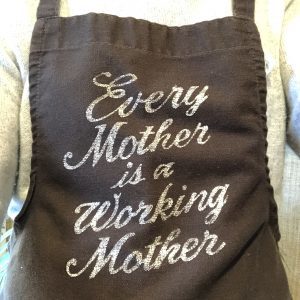
I saw this last week on a mug in my local CVS, and it brought back memories of a tee-shirt I had with the same message until dozens of washings decimated the words. I still have an apron whose bib reads, “Every mother is a working mother.”
That one dates back to when I started writing and people asked if I worked, when more respectfully they should have asked whether I worked “outside the home.”
Every mother works. Mothers have the hardest, most challenging, most important job in the world.
Look at Women Today
They’re working in and out of the home, in the workplace, in the bowels of government, in the casting rooms and writers rooms and director’s rooms. They’re doing things they would never have dreamed, and I’m not talking about Rosie the Riveter, who recently passed away, RIP. I’m talking about speaking up about injustice and abuse. I’m talking about misbehaving in the best possible ways. I’m talking about rocking the boat.
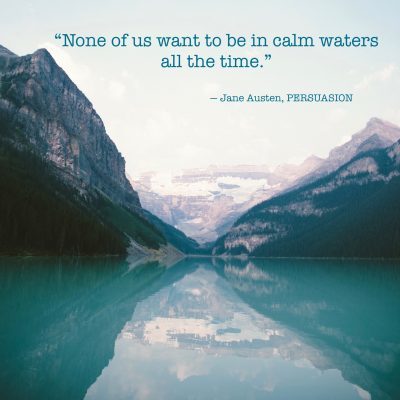
None of us want to be in calm waters all the time ~ Jane Austen
We’ve come a long way, but not far enough. Take this Jane Austen quote. When I first saw it, I thought Jane Austen had to be prescient. Then I realized I was wrong; Jane Austen had a message for 1817.
Women have been trying that long, that hard to exert themselves and be heard. For many years, writing was the only vehicle we had, and even then, it initially took courage for a publisher to put a book out in a woman’s name, rather than that of her husband.
Women today publish freely, but biases remain. I’m guessing, for instance, that the average male mid-list writer is paid more than the average female one – and that may be justified, given the sales. Generally speaking, male readers are more comfortable buying a book written by a man, whereas female readers buy either.
So. A male writer sells to men and women, while a female writer sells mostly to women. That’s half the audience, half the sales. Do you see why women in some genres use their initials, rather than their first name?
Let’s Broaden the Discussion
But wait. I’ve narrowed the discussion, going off on publishing because that’s near and dear. Broaden it again, and we have social media and an arsenal of new tools for the advancement of women. Most recently, consider #MeToo and #WhyIMarch, #TogetherWeRise and #PowerToThePolls.
Given the pervasiveness of social media, I want to think that the current attention to inequality of opportunity and pay for women will register on a larger scale. For lasting results, though, women will have to keep the pressure on for a generation or two.
Calm waters? They’re good if we’re treading in place But if we want to move ahead, making waves may be the only way.

Well Behaved Women Rarely Make History

Before and Again now available
Connect with me on social media: Twitter, Facebook, my new Street Team (click to join for fun, exclusive things I’m dreaming up), Pinterest, Instagram, and that’s it for now. I need time to write my books!
Pre-order Before And Again on Amazon now! Kindle, hardcover, and audio.
The post This is the Reason Women Must Still Rock The Boat appeared first on Barbara Delinsky.
January 22, 2018
The Good News and Bad News of Book Titles
There’s good news and bad news.
The Good News
Twilight Whispers, one of my earliest mainstream novels, is making its debut as an e-Book at the end of this month – on January 30, to be exact. The bad news? I can’t stand the title. I’ve been struggling with it since this book was first published, so many years ago. It’s especially upsetting to hate the title when I love the story inside. Rereading it in anticipation of this digital release, I kept thinking, “Did I actually write this? It’s so good.”
The Bad News
If you’re thinking that surely a writer like me can make her own title stick, think again. The reverse is actually true. A title is a marketing tool, which means that the larger my audience grows, the more my publisher has at stake and the more sway the marketers hold. If the sales force doesn’t like a title, forget it.
This was actually true with my newest, Before and Again. The working title was “Making Up,” but the powers that be didn’t feel that it told enough of what the book is about, and my editor was tasked with suggesting alternatives. She made a list, picked her three favorites, and ran them past the sales force before showing any to me. Thankfully, we all agreed on Before and Again.
Other books of mine where the title was all over the place before we found a winner? The Woman Next Door, Family Tree, and Blueprints. Others of my titles were set from the very start. Sweet Salt Air was that way. This title still sings to me.
Back to Twilight Whispers. My title, which I really liked, was “Blood of the Rich.” I felt it fit the story, which is part family saga, part murder mystery, and part love story. My publisher felt it was too divergent from what the book-buying public expected from me, which is probably precisely why I liked it. Whatever, Twilight Whispers it became.
The “New” News!
Can I sweeten the pot? The e-book of Twilight Whispers will contain a preview – the Prologue, actually – of Before and Again, for which reason alone you may want to consider buying it.
I still don’t like the title, but I do love this book. Try it, and let me know what you think.
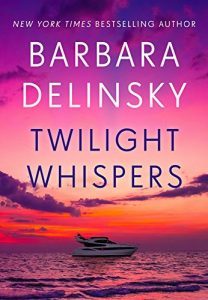
Twilight Whispers eBook now available
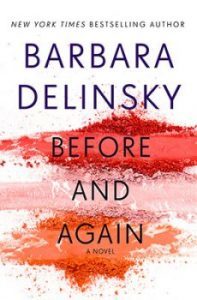
Before and Again now available
Connect with me on social media: Twitter, Facebook, my new Street Team (click to join for fun, exclusive things I’m dreaming up), Pinterest, Instagram, and that’s it for now. I need time to write my books!
Pre-order Before And Again on Amazon now! Kindle, hardcover, and audio.
The post The Good News and Bad News of Book Titles appeared first on Barbara Delinsky.



